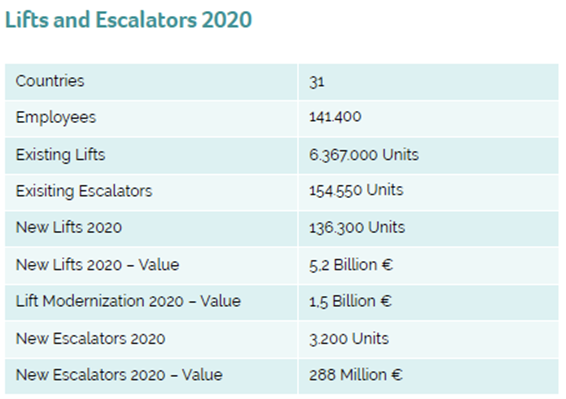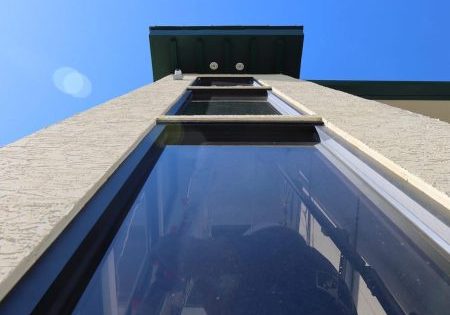Benefits of modernization
by Carsten Henriksen
A wide range of people depend on lifts for a variety of reasons, particularly those who live in densely populated urban areas. The lift has become a ubiquitous part of the urban environment; such a common, safe and reliable feature of multi-level buildings, they are barely noticed and little appreciated vehicles for the transportation of people and goods. Indeed, people usually only really pay attention to lifts when they are out of service. In such instances, it quickly becomes clear how essential these modern workhorses really are to the ease of urban life.
However, in many multi-level buildings that have been in existence for decades, building owners have found aging lift stocks difficult and costly to upgrade or replace. This leaves users at increased risk of injury from a lengthening list of safety hazards as older lift technologies become obsolete. Unfortunately, accidents — even fatal ones — do still happen on lifts and escalators, although they are extremely rare.
Aside from generally improving safety, modernizing lifts comes with a raft of additional benefits, such as improved energy efficiency and sustainability as well as increased accessibility for people with disabilities.
Rising Trends, Changing Technology
More than 6 million lifts are in use today in Europe and work to the satisfaction of the majority of users. But not everything about this picture is perfect. In many countries, more than half the existing lifts in use today are 25 years old or older. Every market supplier in the lift industry has old units on their service portfolio — some even going back 100 years or more. Only a small percentage of the lifts installed before the turn of this century (i.e., pre-2000) have been modernized to meet current “state of the art” requirements when it comes to safety and performance.
This is an ongoing problem: With each passing year, more and more lifts become obsolete as new models come on the market with technology that continuously improves overall safety, energy efficiency, communication and maintenance. With the current trends of Internet of Things (IoT), smart buildings and “net zero” targets making demands on the construction industry, lifts are facing some of the biggest changes in technology, functionality and system architecture in living memory.

The Benefits of Modernization
However, it is not all bad news. Just about any lift component can be replaced to improve the safety and operational performance of the overall system. Aesthetics, transportation capacity and comfort can be improved through a modernization of the car and the drive capabilities. The end result can be a significant improvement in energy efficiency and sustainability for the building, lower maintenance costs for the lift owner and increased safety, reliability and accessibility for users.
The Regulation Challenge
The current European Lifts Directive (2014/33/EU) is not retrospective and only regulates the installation of new lifts and the manufacture of new components for the industry. Of the lifts in use today in Europe, only a small percentage have been installed since the application of the new directive. The rest were installed before 2014, and for those, the “state of the art” regarding technology shows clear gaps in the actual level of safety and performance.
Experts in the lift industry have compiled a list of 85 risks that can exist on old lifts, which are assessed under a gap analysis framework commonly known as EN 81-80 “SNEL” (Safety Norms for Existing Lifts) and forms part of the European Standard EN 81. Some of these 85 identified areas of risk can lead to fatal accidents and should be urgently addressed.

The difficulty is that, in Europe, there is no common set of regulations or standards on the matter of safety for existing lifts. Adoption of the EN 81-80 standard in EU member states is voluntary, so the uptake is dependent on national legislation and implementation in various jurisdictions.
In some countries, it is a legal requirement for the duty holder to carry out an EN 81-80 assessment. For example, in Germany, this risk assessment for any existing lifts not covered by the European Lifts Directive is now part of national legislation. Any deviation from the current “state of the art” standards will be noted in periodical inspections carried out by accredited national inspection bodies. The owner of the lift will then be given a deadline, according to the risk level found in the gap analysis, to bring the lift up to date with the minimum requirements.
Even in other EU states where it is not mandatory, a risk assessment of used lifts is still recommended toward maintaining the safety and performance of lifts over time.
Enormous Potential for Improvement
In 2018, more than 1,180 lift user accidents were recorded, with more than 20 fatalities and 60 causing “serious” injuries. When the root causes of these accidents were investigated, nearly half of these could have been avoided if the lift owner had taken actions to modernize their lifts based on a SNEL gap analysis.
The Safety, Accessibility and Energy efficiency in existing Lifts (SAEL) Working Group, and the entirety of the European Lift Association (ELA) as the voice of the elevator industry in Europe, must continuously work toward the adoption of standards for safer and better performing lifts, not only cover for new installations, but also for the safety of the existing lift base on the continent.
Although ELA continues to advocate for the acceptance and harmonious implementation of SNEL legislation throughout the EU member states for existing lift installations, individual lift owners are also urged to take action to modernize their existing lifts to prevent fatalities, further advance accessibility for disabled users and improve the overall energy efficiency of their buildings. A practical “step-by-step” approach can often be beneficial, easing the financial impact on the owner by splitting up the modernization investment into manageable pieces.
Visit the ELA website for more information on lift safety

Also read: Modernization of an Icon
Get more of Elevator World. Sign up for our free e-newsletter.










